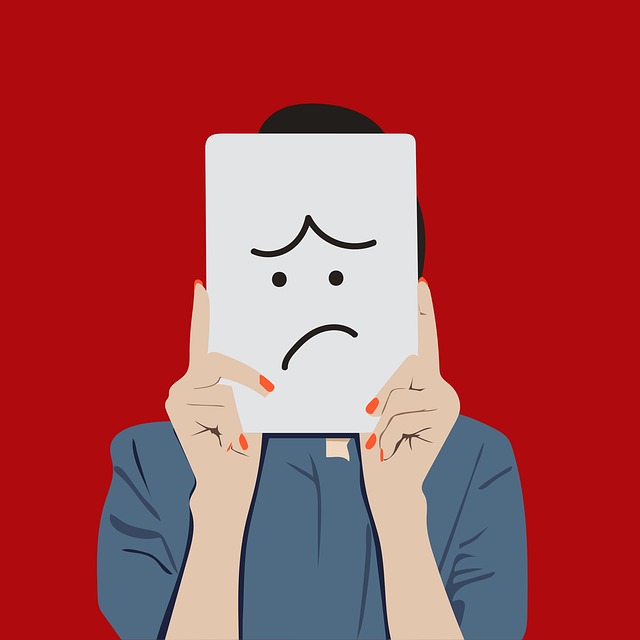Cognitive Behavioral Therapy (CBT) is an evidence-based approach addressing diverse mental health concerns by challenging negative thought patterns and behaviors. Effective for conditions like depression, anxiety, PTSD, and OCD, CBT offers structured techniques, including cognitive restructuring and exposure therapy, to promote self-awareness and improve well-being. Homework assignments reinforce learning between sessions, leading to long-lasting symptom relief and enhanced coping strategies. With a strong evidence base and adaptability across populations, CBT has become a go-to therapy in today's digital era.
Evidence-based cognitive therapy (CBT) is a powerful approach transforming mental healthcare. This comprehensive guide delves into the science, techniques, and benefits of CBT, offering a clear understanding of its effectiveness in treating anxiety and depression. From session structures to real-life success stories, explore how CBT integrates modern practices, providing valuable insights for both professionals and those seeking healing. Discover why CBT therapy stands as a game-changer in mental wellness.
Understanding CBT Therapy: A Comprehensive Overview

Cognitive Behavioral Therapy (CBT) is a form of talk therapy that focuses on identifying and changing negative thought patterns and behaviors. It’s a structured and goal-oriented approach designed to help individuals manage various mental health conditions effectively. By understanding the connection between thoughts, feelings, and actions, CBT enables people to challenge and replace unhelpful cognitive distortions with more realistic and adaptive thinking.
This therapy type has been extensively researched and proven effective for treating depression, anxiety disorders, post-traumatic stress disorder (PTSD), obsessive-compulsive disorder (OCD), and many other conditions. CBT sessions typically involve learning specific coping strategies, setting achievable goals, and applying these techniques in real-life situations. It empowers individuals to take an active role in their recovery process, fostering self-awareness, resilience, and improved mental well-being.
Science Behind CBT: Evidence and Research Validity

Cognitive Behavioral Therapy (CBT) is a well-researched and evidence-based approach that has gained significant recognition in the field of mental health. The science behind CBT revolves around understanding the connection between thoughts, feelings, and behaviors. Research has shown that our thoughts influence our emotions and subsequent actions, which forms the core principle of this therapy. By identifying and challenging negative or distorted thinking patterns, CBT aims to bring about positive changes in a person’s overall well-being.
Numerous studies have validated the effectiveness of CBT for various mental health disorders. Randomized controlled trials have demonstrated its success in treating depression, anxiety disorders, post-traumatic stress disorder (PTSD), and even eating disorders. The research highlights that CBT is not only effective but also cost-effective, making it a popular choice among therapists and healthcare providers worldwide.
Techniques Used in CBT for Mental Health Treatment

Cognitive Behavioral Therapy (CBT) employs a range of effective techniques tailored to address various mental health concerns. One key method is identifying and challenging negative thought patterns, replacing them with more realistic and positive alternatives. Therapists help individuals recognize distorted thinking, such as all-or-nothing reasoning or overgeneralization, and encourage them to examine the evidence supporting these thoughts. This process empowers patients to develop healthier cognitive frameworks.
Additionally, CBT incorporates structured exercises like behavioral activation, where individuals are guided to engage in activities they previously avoided due to emotional distress. Exposure therapy is another powerful tool, gradually exposing clients to feared situations or triggers to reduce anxiety and phobia-related symptoms. Through these evidence-based techniques, CBT offers practical strategies for managing mental health challenges, fostering resilience, and improving overall well-being.
CBT vs Traditional Therapy: Key Differences Explained

Cognitive Behavioral Therapy (CBT) stands apart from traditional therapy approaches with its focused and structured approach. While traditional therapy often explores the root causes of psychological issues through free-flowing conversation, CBT takes a more targeted route. It identifies and challenges negative thought patterns and behaviors, aiming to alter them into healthier, more adaptive ones.
In contrast, traditional therapy may engage in various techniques like psychoanalysis, which delves deep into past experiences and unconscious motivations. These methods aren’t inherently inferior, but CBT offers tangible, actionable strategies for managing mental health. It empowers individuals with coping mechanisms, encouraging self-reflection and responsibility in their own healing process.
Benefits of CBT for Anxiety and Depression Management

Cognitive Behavioral Therapy (CBT) has emerged as a highly effective approach for managing anxiety and depression. By focusing on identifying and changing negative thought patterns and behaviors, CBT empowers individuals to gain control over their emotional well-being. This evidence-based therapy is grounded in the understanding that our thoughts, feelings, and actions are interconnected, and by modifying these thought processes, individuals can experience significant improvements in their mental health.
One of the key advantages of CBT is its ability to provide long-lasting relief from anxiety and depression symptoms. Through structured sessions, individuals learn coping strategies and problem-solving skills that enable them to navigate challenging situations with newfound resilience. CBT also fosters self-awareness, allowing people to recognize triggers and early signs of relapse, thus promoting proactive mental health management.
CBT Session Structure: What to Expect During Therapy

CBT sessions typically begin with an initial assessment where a therapist will discuss your goals and concerns, tailoring the treatment to your specific needs. This collaborative process involves exploring your thoughts, feelings, and behaviors, helping you identify negative thought patterns and unhelpful strategies. During subsequent sessions, Cognitive Behavioral Therapy focuses on challenging these distorted beliefs and replacing them with more adaptive ones.
Each session usually lasts for 45-60 minutes and follows a structured format. The therapist will first review your progress and any new issues since the previous meeting. Then, they’ll guide you through specific techniques like cognitive restructuring, exposure therapy, or mindfulness exercises. Active participation is encouraged, where you’re expected to complete homework assignments between sessions to reinforce learned skills and track your thoughts and emotions.
Homework Assignments: A Vital Part of CBT Process

Homework assignments play a pivotal role in evidence-based cognitive therapy (CBT), serving as a bridge between therapy sessions. These tasks are designed to reinforce learning and empower individuals to apply CBT techniques in their daily lives. By engaging in structured activities, clients can better understand and challenge negative thought patterns outside of the therapeutic setting.
Each homework assignment is tailored to specific therapy goals, encouraging individuals to monitor their thoughts, emotions, and behaviors. This self-reflective process enables them to identify cognitive distortions and replace them with more adaptive thinking strategies. Through consistent practice, CBT homework fosters a deeper understanding of one’s mental processes and promotes positive behavioral changes, ultimately enhancing the overall effectiveness of the therapy.
Success Stories: Real-Life Impacts of CBT Therapy

Evidence-based cognitive therapy (CBT) has countless success stories to its credit, showcasing its real-life impacts on individuals across various demographics. Many patients have witnessed significant improvements in their mental health and overall well-being after undergoing CBT. This therapeutic approach helps people identify and challenge negative thought patterns, replacing them with more adaptive and realistic thoughts. As a result, individuals often experience reduced symptoms of anxiety, depression, and other common mental health disorders.
One compelling example is the success of CBT in treating individuals with phobias. Through exposure therapy, patients are gradually exposed to their feared situations or objects, learning coping strategies along the way. This process empowers them to manage their fear and live more fulfilling lives. Similarly, CBT has proven effective for teenagers dealing with stress, offering them valuable tools to cope with academic pressures and interpersonal challenges. These success stories highlight the versatility and power of CBT therapy in transforming lives.
Integrating CBT into Modern Mental Healthcare

In today’s digital era, evidence-based cognitive behavioral therapy (CBT) has emerged as a game-changer in modern mental healthcare. CBT therapy integrates effective techniques that empower individuals to manage and overcome mental health challenges. By focusing on identifying and modifying negative thought patterns and behaviors, CBT offers a structured approach to enhancing well-being. This therapeutic method is widely recognized for its ability to provide tangible results, making it a preferred choice among professionals and clients alike.
The seamless integration of CBT into modern healthcare systems has revolutionized treatment accessibility. With a strong evidence base, this therapy ensures that patients receive scientifically validated care. As a result, many individuals are now benefitting from improved mental health outcomes and increased resilience to navigate life’s challenges effectively.
